

8/2006

The World Monuments Fund (WMF) and American Express Company announced on July 27 that seven endangered historic sites will receive funding through the new American Express Partners in Preservation program. “American Express has been an enthusiastic supporter of the World Monuments Fund for more than 10 years,” explains WMF President Bonnie Burnham. “These generous grants from American Express are critical to helping to protect and conserve sites that are testaments to human achievement for future generations to enjoy.”
The sites, which will receive a total of $700,000, are:
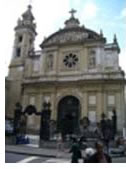 Church of La Merced, Buenos Aires
Church of La Merced, Buenos Aires
Part of one of the oldest monasteries in the city, the Church of La Merced
in the historic center of Buenos Aires dates from 1779. A neo-Renaissance
façade by Juan Antonio Buschiazzo was added to the building
in 1894. Thousands of tourists each year visit the church, which was
named a National Historical Monument in 1942. The preservation plan
includes urgent repairs and structural stabilization, the replacement
of electrical systems that have become dangerous, and the development
of a conservation master plan for the church, outlining priorities
and methodologies for intervention.
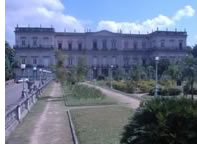 Quinta da Boa Vista (National Museum), Rio de Janeiro
Quinta da Boa Vista (National Museum), Rio de Janeiro
Home to the Brazilian imperial family for much of the 19th century
until the monarchy was overthrown in 1889, the original Quinta da Boa
Vista was constructed in 1803 by a local aristocrat, Elias Antônio
Lopes, and subsequently expanded. The palace now houses the collections
of the National Museum, including the most important scientific collection
in Brazil. Interior conditions are deteriorating as a result of neglect
and natural decay, including insect infestation in the flooring and
cracks in the ceiling. A conservation plan for Empress Leopoldina’s
quarters under development includes priority conservation measures,
among them the restoration of the decorative painted and gilded ceilings
and doorframes.
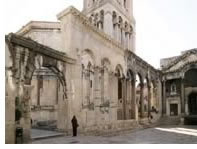 Diocletian’s Palace, Split, Croatia
Diocletian’s Palace, Split, Croatia
WMF has been involved in two major projects at Diocletian’s Palace:
conservation of the Temple of Jupiter, now completed, and the conservation
of the Peristyle, currently underway. The palace served as a retreat
and retirement home for the Late Roman emperor Diocletian, and its design
incorporates elements of Roman military and villa architecture. Surrounded
by fortifications and crisscrossed by perpendicular streets, it stands
as an extremely rare example of a Roman palace preserved in a recognizable
form within a continuously occupied historic city center in Europe. Documentation,
structural analysis, and other studies have been completed as well as
a pilot conservation project. A maintenance plan for the site will be
created and conservation of the rest of the peristyle will now begin.
 San Juan Bautista, Cuauhtinchan, Puebla, Mexico
San Juan Bautista, Cuauhtinchan, Puebla, Mexico
Built in the 16th century to support the religious conversion of the
indigenous population, the Franciscan convent of Cuauhtinchan comprises
an atrium, church, convent, pilgrims’ portal, garden, and cemetery.
Since 1992, the complex has served as both a functioning church and
a museum, but the complex is inadequately maintained and faces myriad
conservation problems, including the effects of a freeze-thaw cycle
that have caused the main altar, the oldest preserved in Mexico, to
shrink and crack, and more generally from dirt and biological growth
and natural deterioration due to aging. The immediate action planned
for the site includes a study that will allow the project team to address
problems associated with fluctuations of humidity and temperature in
the sanctuary of the church and the restoration of the 16th-century
main altar, including its painted decoration.
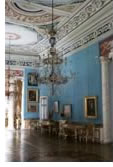 Ostankino Estate Museum, Moscow
Ostankino Estate Museum, Moscow
Commissioned by Count Nicholas Petrovitch Cheremetiev at the end of the
18th century, the palace at Ostankino is an exceptional Neoclassical
residence, ranking among the most important surviving estates in Russia.
The one-story building with its Egyptian and Italian halls, formal
apartments, and richly ornamented galleries, was renowned for the concerts
and lavish parties. Past work at the gallery has focused
on preventing water infiltration and stabilizing the structure, but
the restoration of the interior has not yet been addressed. Towards
this end, WMF Europe recently brought together painting and wallpaper
specialists to develop a plan for the conservation of the gallery,
including the restoration of the painted ceiling, wallpaper, and
painted wood.
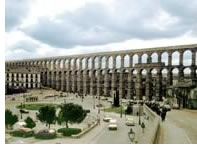 Segovia Aqueduct, Segovia, Spain
Segovia Aqueduct, Segovia, Spain
Constructed in the second half of the first century AD, the Segovia aqueduct
is one of the best preserved Roman aqueducts in the world—it
was still being used to provide water to the city in the early 20th
century—and it remains the city’s most prominent symbol.
While the aqueduct remained standing for almost 2,000 years, the threats
posed by modern civilization, particularly automobile traffic and pollution,
threaten its survival into the next century. The ashlar masonry used
to build it is particularly vulnerable to these threats: as blocks
are exposed to weathering and pollution, their flat sides and tight
joints erode and become rounded, destabilizing them. The preservation
project for the aqueduct includes the development of a conservation
and management plan for the site that addresses not only urgent physical
needs of the monument, but also its context within a modern urban environment
in Europe.
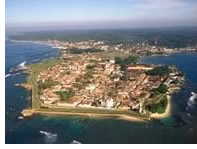 Old Dutch Hospital, Historic Galle, Sri Lanka
Old Dutch Hospital, Historic Galle, Sri Lanka
Seized by the Portuguese from the Sinhala kings in 1587, the historic
city of Galle was the most important port in Sri Lanka for centuries.
After the Portuguese, Galle was occupied by the Dutch in the 17th century,
who erected a fort there in 1663, and by the British in the 18th century.
The Dutch fort now contains private houses, temples, churches, and
civic buildings, whose architecture combines European and Southeast
Asian styles. Galle suffered substantial loss of life and property
damage in the Indian Ocean tsunami of December 2004. While parts of
the historic center of Galle were protected by the bastions of the
Dutch fort, an enormous number of historic private homes and public
buildings were damaged. One such building that has emerged as a priority
is the Old Dutch Hospital in Galle. Though it most recently served
as the District’s Secretary’s office, the proposal would
restore the structure and adapt it for reuse as a center for Sri Lankan
art and culture.
Copyright 2006 The American Institute of Architects.
All rights reserved. Home Page ![]()
![]()
For more information about this and other global preservation forums, visit the World Monuments Organization online.
![]()